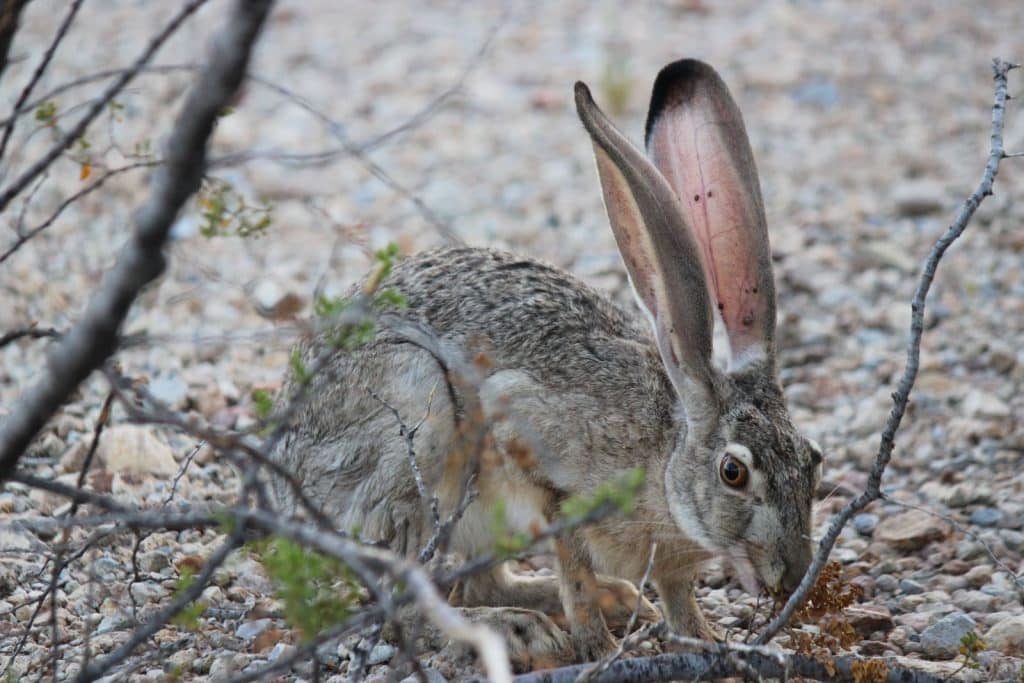
The Desert Cottontail, also commonly known as “Audubon’s Cottontail,” is named after its unique tail that resembles a fluffy ball of cotton, as well as the natural desert habitat that they favor. The species is found throughout the Midwestern United States, preferring open grasslands and shrublands, but they can also be found in sparse forest areas. They are highly adaptable animals that can tolerate a variety of temperatures and habitats, but due to their skittish nature, they are not commonly kept as pets.
Read on below for more information about the Desert Cottontail!
Quick Facts About Desert Cottontail
| Species Name: | Sylvilagus audubonii |
| Family: | Leporidae |
| Care Level: | Moderate |
| Temperament: | Skittish, easily frightened |
| Color Form: | Tan to grey, white underside |
| Lifespan: | 1-3 years |
| Size: | 15.5 to 18.5 inches, 1.5-3 pounds |
| Diet: | Herbivorous |
| Minimum Enclosure Size: | 24 square feet |
| Enclosure Set-Up: | 8×8 feet living area, 24×24 exercise space |
| Compatibility: | Good |
Desert Cottontail Overview
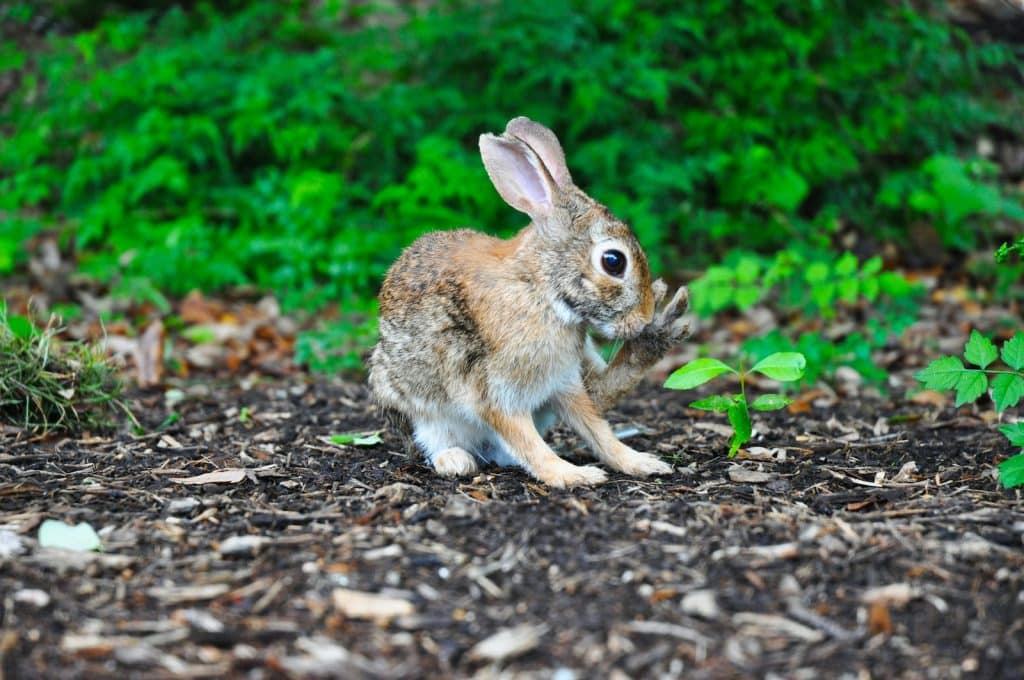
The Desert Cottontail has a distinct preference for the more arid regions of the midwestern and southwestern United States, and they can be found from eastern Montana to Texas, Nevada, and Southern California. They are found from sea level to a height of around 6,000 feet, at which point, other species begin to dominate the landscape.
They are stapled meals for predators in the areas they live in, resulting in not only a short average lifespan (rarely living in the wild for more than 1 year) but also a skittish, highly strung, and easily stressed nature. This makes them less than ideal as pets because they are easily frightened and difficult to tame. If these rabbits are kept in captivity, it should be for as short a time as possible, in a place with plenty of hiding spaces and as far away as possible from other pets like dogs and cats. They are solitary animals in the wild that are not tolerant toward members of the same species besides during mating season, but they are surprisingly tolerant toward other rabbit and hare species in their natural habitat.
How Much Do Desert Cottontails Cost?
Due to the fact that Desert Cottontails do not make good pets, they are not often bred in captivity, and as such, there are very few, if any, available for sale.
Typical Behavior & Temperament
Desert Cottontails are most active in the early morning and late afternoon and night, but they can be spotted during the day too. During the heat of the day, they are usually resting in the shade of a shrub or specially made burrows, and in the summer months, they are rarely active in the daytime.
They are fast animals that can reach speeds of up to 20 MPH when trying to evade predators, and they can be seen running in a characteristic zigzag pattern to escape. They will attempt to run to and hide in their burrows or a thicket, but if they are cornered, they will roll onto their backs and kick with their powerful hind legs. If they hear or spot a predator from a distance, they will often freeze and bow down to blend in with their surroundings and flee or kick as a last resort.
Being so high up on the prey list of so many natural predators makes these animals naturally skittish and almost constantly on edge, a trait that makes them less than ideal to be tamed or kept as pets.
Appearance & Varieties
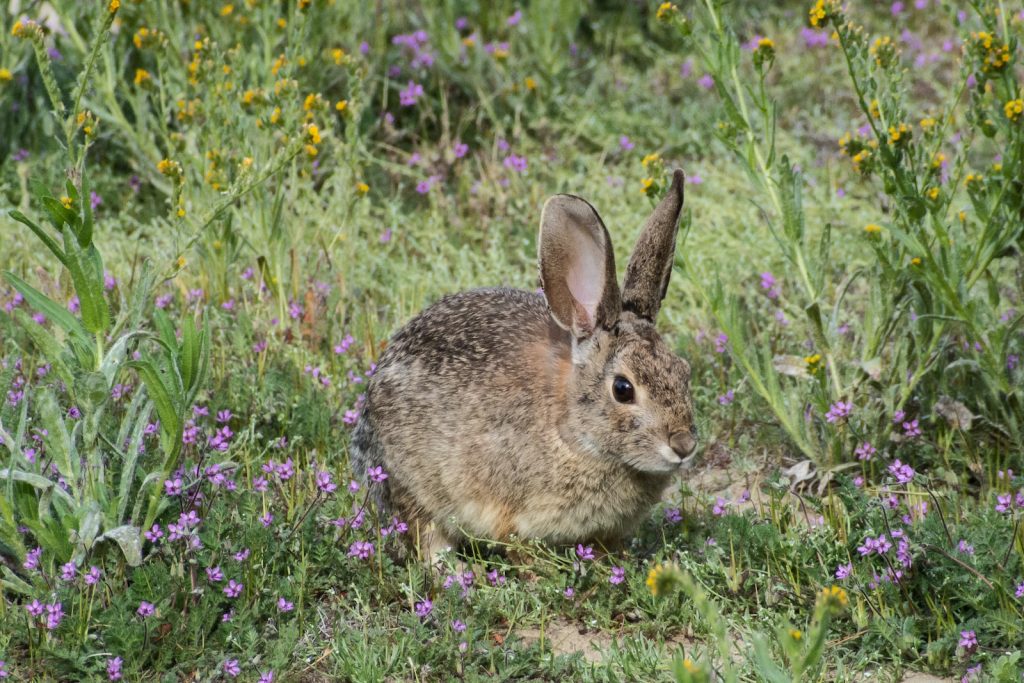
The Desert Cottontail is a lightly colored animal, with a brown/tan to grey coat with a yellowish tinge to it. The underside of their body is usually pure white, including the inside of their legs, but it can also have a slightly grey appearance. The tail is rounded and fluffy — hence their name — and is dark colored like their bodies on top and white underneath. Their ears are around 3 or 4 inches long with rounded ends, and they typically reach up to 18 inches in body length. Females are typically larger than males, although only by a couple of inches.
While there is only one variety of Desert Cottontail, there are around 10 known Cottontail species, the most common varieties include:
- Sylvilagus floridanus — Eastern cottontail
- Sylvilagus bachmani — Brush rabbit
- Sylvilagus palustris — Marsh rabbit
- Sylvilagus nuttallii — Mountain cottontail
How to Take Care of Desert Cottontails
Since Desert Cottontails are not usually kept as pets, there is little information available in terms of their care. Their enclosure, however, should be as big as possible, with at least 24 square feet of space for them to run around end exercise in. They will also need a small, quiet, darkened hutch to give them privacy and a space to hide in, for them to feel safe. Lastly, they should be kept in a quiet area that is not accessible to other pets, like dogs or cats.
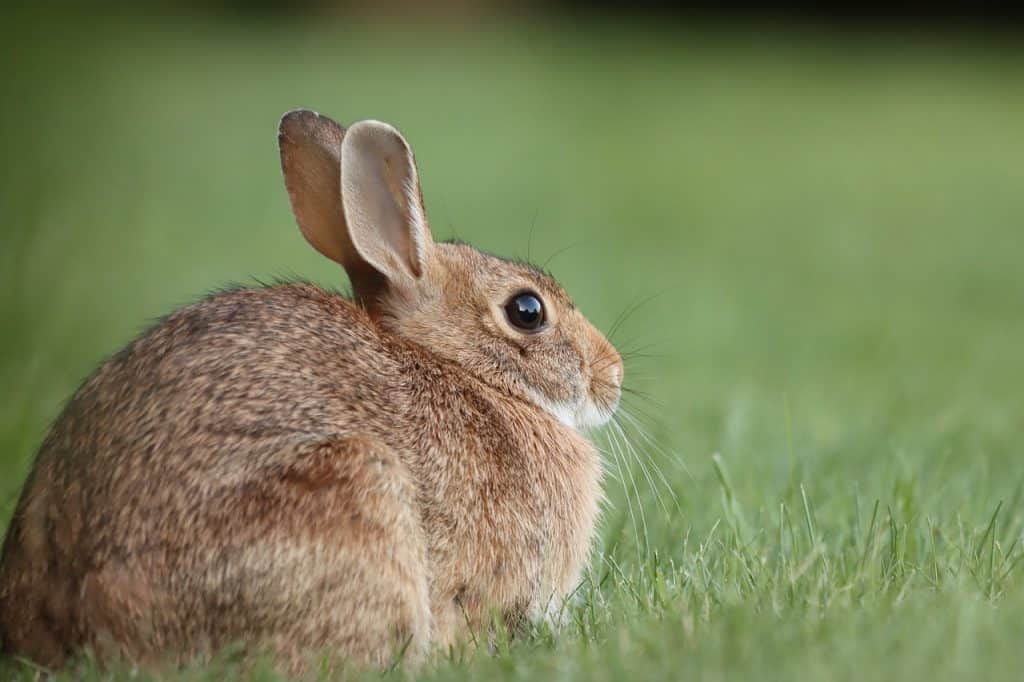
Their enclosure should replicate their natural environment as closely as possible, with plenty of small hiding spaces, a water source, and natural features, like shrubs and trees. Cottontails have been known to climb trees and even swim when pursued by predators, so the inclusion of these features in their enclosure will help keep them feeling safe. Since these animals can be so territorial, they should not be kept together with other Desert Cottontails.
Do Desert Cottontails Get Along With Other Pets?
In the wild, Desert Cottontails are highly tolerant of other rabbit and hare species in their habitat, but not of other members of the same species because they are highly territorial. Males are known to fight over habitat and females during the breeding season, and a male’s territorial range can extend up to 15 acres in size.
Since they are so skittish and accustomed to being chased by predators, they do not get along with dogs or cats and should be kept as far away from other pets as possible. That said, they are tolerant of other rabbit and hare species in the wild, although they may not interact with them at all, and as such, they are best kept alone.
What to Feed Your Desert Cottontail
Desert Cottontails are strict herbivores, and in their natural habitat, they can be found feeding on a wide variety of plants, including grasses, shrubs, certain fruits, bark, and even cacti at times. Even so, around 90% of their diet in the wild is made up of grass, and the same should be adhered to in captivity. Commercial rabbit pellets that are of high quality are ideal, with plenty of fresh hay and occasional treats of fruits and vegetables.
Interestingly, Desert Cottontails are coprophagic, meaning that they frequently feed on their own feces. The grass is difficult to digest, and Cottontails have fairly simple digestive tracts, and they will often eat the first set of feces pellets after a meal to gain the extra nutrition leftover from the digestion process.
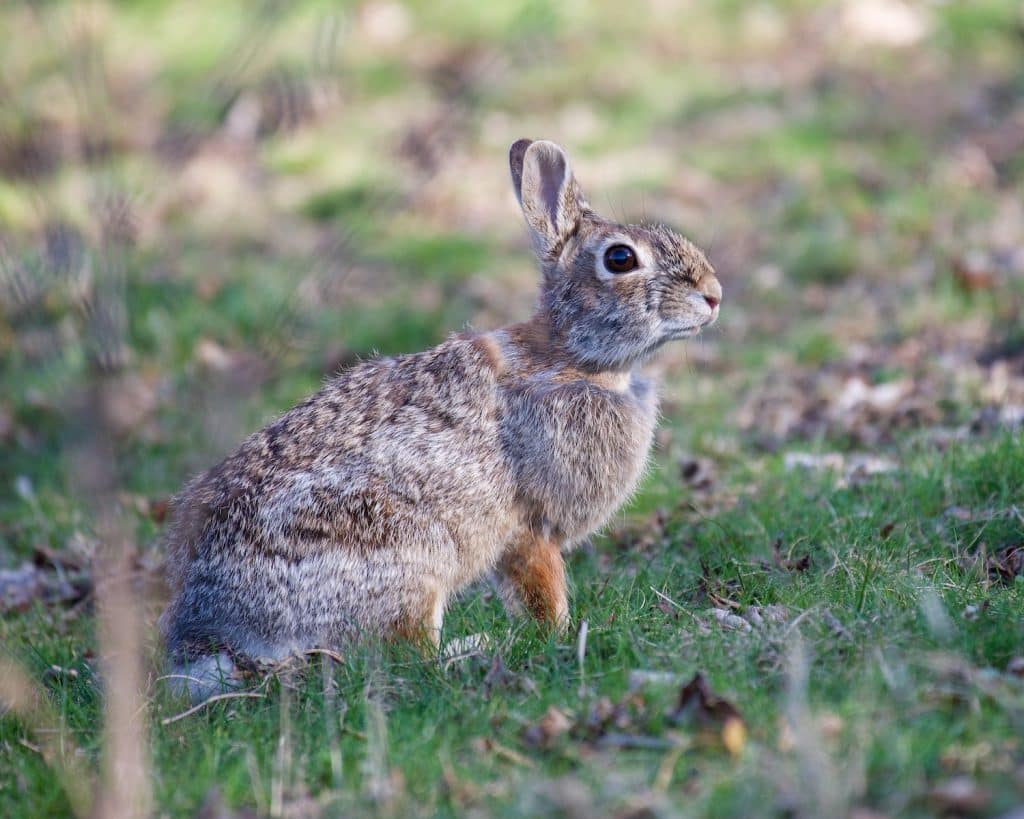
Keeping Your Desert Cottontail Healthy
In the wild, Cottontails have short lifespans, and few individuals live beyond a year or two. This is largely due to predation, however, and they may live for up to 8 years or more in captivity. If a Cottontail has a large enclosure in which it can happily exercise its natural instincts, is kept in a safe and calm environment, and is fed a healthy diet that’s close to what it would eat in the wild, it can live for a long time in captivity. Cottontails are hardy, healthy animals that suffer from few health issues other than ticks, mites, and parasites.
Breeding
Cottontails can be bred at around 80 days old, and females can mate again soon after giving birth. This makes them prolific breeders, and without natural predators, they would swiftly take over their natural environment. A female may typically bear young for up to 8 months of the year, resulting in four or five litters of two to six young, with the potential of having up to 30 young per year! The babies are also weaned quickly — at about 2 weeks old — and will leave the nest to fend for themselves as young as 3 weeks old.
Is Desert Cottontail Suitable for You?
Since Cottontails are so skittish, difficult to tame, and easily frightened, they do not make ideal pets. They also need large enclosures to stay happy, usually ones much larger than those needed by domesticated rabbits or bunnies, and they need to live alone. This makes them difficult to house without the benefit of petting them or connecting with them the way that you can with bunnies. With all this in mind, they are animals best left in the wild to do their thing, and it’s far better to keep common varieties of domesticated bunnies as pets, as well as more rewarding!
Is a desert cottontail a rabbit?
The desert cottontail (Sylvilagus audubonii), sometimes known as Audubon’s cottontail, is a New World cottontail rabbit and a member of the Leporidae family.
Can you hold a newborn cottontail rabbit?
You and your children may look at the young bunnies but not touch them. Return any bunnies that have been picked up to the nest. A little human odor will not prohibit the mother from caring for her children. If it is evident that the mother rabbit was murdered, call a wildlife rehabilitator who can best care for the orphaned bunnies.
Can you keep a newborn cottontail rabbit as a pet?
Because of this, wild cottontails cannot be maintained as pets or education animals; they are simply too quickly agitated to have a pleasant life in confinement,” Dr. Wilkinson says. Domesticated rabbits, on the other hand, are typically used to people and may approach you if spotted outside.
Do cottontail rabbits carry diseases?
Tularemia is known as rabbit fever because of its association with these natural pests. Ulcers and stomach discomfort are possible symptoms of the condition. Other prevalent rabbit ailments include ringworm and Lyme disease.
Do cottontail rabbits eat?
In the spring and summer, New England and eastern cottontails eat nearly solely delicate grasses, leaves, and herbs. Cottontails, particularly eastern cottontails, may feed on crops such as peas, beans, and lettuce. In the winter, the bark, twigs, and buds of shrubs and young trees are consumed.
Can cottontail rabbits catch rabies?
Small Rodents and Other Wild Animals Small rodents (such as squirrels, hamsters, guinea pigs, gerbils, chipmunks, rats, and mice) and lagomorphs (such as rabbits and hares) are nearly never discovered to be infected with rabies and have never been known to transmit rabies to people.
Do wild cottontail rabbits bite?
Wild rabbit bites are uncommon since they normally do not bite unless totally trapped. However, if you are bitten by a wild rabbit, get medical attention. Wild rabbits seldom transmit serious illnesses, but they can carry rabies or induce a bacterial infection.
How long do cottontail rabbits live?
Weight varies from 1.8 to 4.4 pounds, with females sometimes weighing more. Some rabbits can live for 4 or 5 years, but the average life expectancy for rabbits who survive to leave the nest is only approximately 11 months.
What does the desert cottontail eat?
Cottontails eat grasses and green plants in the spring and summer, and bark and twigs in the fall and winter. Desert Cottontails seek protection in the burrows of other animals as well as in their own scratched-out depressions.
Are cottontail rabbits uncommon?
This once-common rabbit’s range has diminished and its population has declined during the last 50 years. Biologists think there are just about 13,000 New England cottontails left.